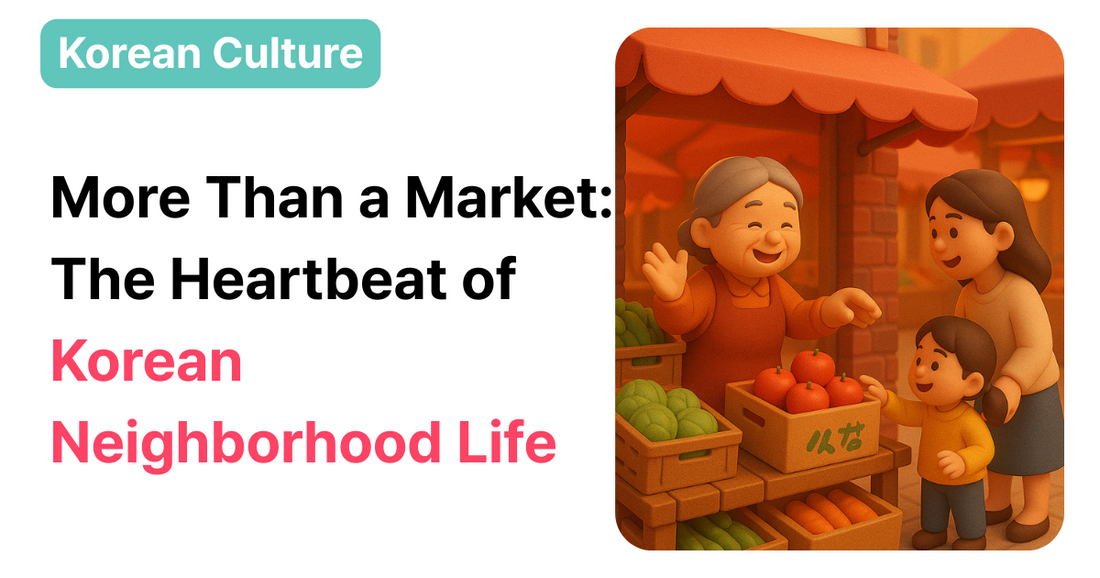
What It’s Like to Shop at a Korean Traditional Market
Share
Visiting a traditional market in Korea isn’t just about buying groceries—it’s about stepping into a slice of living history.
With lively voices, sizzling food stalls, and warm neighborhood energy, these markets are where locals connect, traders hustle, and every purchase comes with a story.
Let’s explore what makes Korean traditional markets so special.
Market vs. Supermarket: What’s Different?
At first glance, you might think a market is just a bunch of small shops.
But step inside, and you’ll feel the difference right away.
In a Korean traditional market, you’ll find:
Vendors selling from open tables, not aisles
Fresh produce, homemade side dishes, and live seafood
Narrow alleyways buzzing with conversation and smells
Food stalls cooking tteokbokki, hotteok, or bindaetteok on the spot
Unlike supermarkets, there’s no set price tag culture here—prices can be flexible, and conversations are part of the experience.
💡 Tip: Bring cash and a smile—it goes a long way!
“Service” Culture and Bargaining
Ever heard of “서비스” (seobiseu)?
It means “free extra”, and it’s a beloved part of Korean shopping culture—especially in markets.
Buy 3 apples? The vendor might toss in an extra one.
Buying side dishes? You may get a scoop of something new to try.
Regular customers often get small discounts or warm greetings by name.
While bargaining isn’t as common as it used to be, it’s still acceptable in some stalls—especially if you’re buying in bulk or from older vendors.
💬 Try politely asking:
“좀 깎아주실 수 있어요?” – Can you give me a little discount?
Community and Freshness
Korean markets aren’t just about prices—they’re about relationships.
Vendors often work in family units, passing stalls down through generations.
They remember your face, your favorite veggie, and even ask how your mom is doing.
And of course, the food is incredibly fresh:
- Tofu made that morning
- Kimchi fermented in small batches
- Fish caught just hours earlier
The market brings neighbors together—not just to buy, but to chat, laugh, and share news.
The Market Isn’t Just for Groceries—It’s for Stories Too
Shopping at a Korean traditional market is like being wrapped in warmth, aroma, and real-life interaction.
You leave not only with full hands but also a fuller heart—having talked with real people and witnessed a slice of local life.
📩 Subscribe to our newsletter
Want to learn more about Korean everyday culture?
From language tips to food traditions, we’ll send you real insights straight from Korea!
